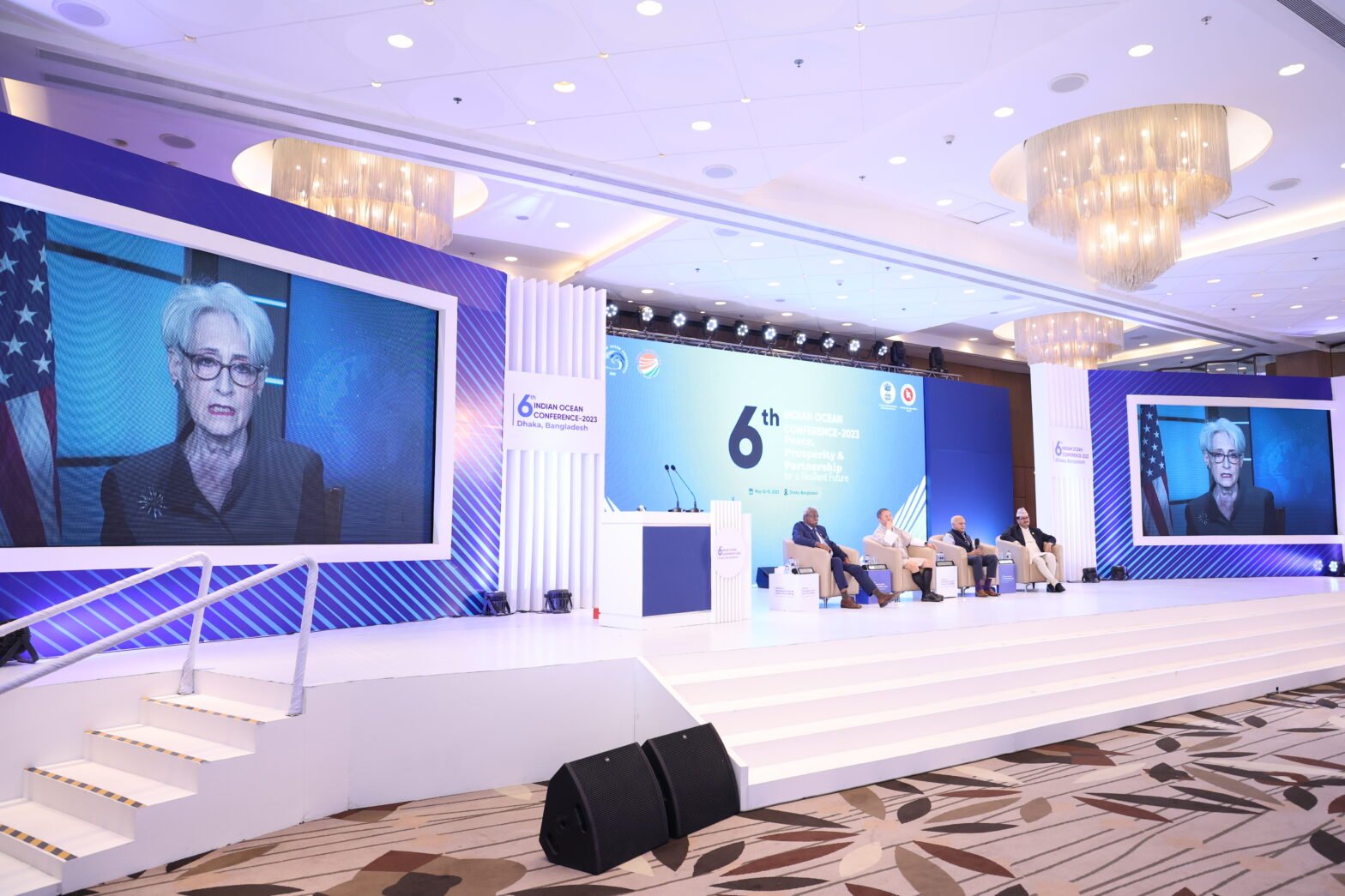The United States is committed to elevating its engagement in the Indian Ocean region (IOR). The future of the world will be determined in large part by what happens in the IOR. The Indian Ocean region is home to 2.7 billion people—more than a third of the world’s population—and with an average age of 30 years, that percentage will only grow.
It is difficult to overstate the economic significance of this region. The Indian Ocean accounts for one-fifth of the world’s ocean surface, and it connects people and economies around the globe. Its vast coastline includes some of the world’s most important shipping lanes—from the Strait of Hormuz to the Malacca Strait. Eighty percent of the world’s maritime oil shipments traverse Indian Ocean waters. Some of the planet’s most vital fisheries are here, and they play a critical role in employing people in the region and feeding people around the world.
So, it makes sense that all of us have an interest in a peaceful and prosperous future for the Indian Ocean region. As President Biden has said, the United States is “committed for the long haul, ready to champion our vision for a positive future for the region together with friends and partners.”
At the same time, IOR does face serious challenges. The climate crisis touches us all, but it has a disproportionate impact on Indian Ocean countries. For some, particularly island states, climate change represents an existential threat. Meanwhile, piracy, armed robbery at sea, and trafficking degrade maritime security. And illegal, unreported, and unregulated fishing threaten blue economies, which need to be sustainable for future generations to prosper.
All of these challenges require a concerted and collaborative approach—Among all of us, countries, multilateral bodies like IORA, civil society, and people. And the United States is committed to doing our part. That’s why USA has announced plans to provide $165 million for programs across the Indian Ocean region that address climate change adaptation and mitigation, including the transition to a clean energy future.
It’s also why we are seeking to provide $6 million, working with the U.S. Congress, for regional maritime security initiatives, partnering with Bangladesh, India, Maldives, and Sri Lanka. This funding will bolster interdiction and law enforcement capacity in the Indian Ocean’s South Asian sub-region. Partnership is critical to maritime security, and I want to acknowledge India’s leadership in this space, specifically in the fields of anti-piracy, EEZ monitoring, and disaster response.
Investment in sustainable blue economies is a force multiplier, spurring economic development and demonstrating how environmental protection and economic growth are mutually reinforcing. Through USAID, the United States invests more than $33 million in 15 countries each year to promote sustainable fisheries and conserve marine biodiversity. And in this region, we are working to identify development assistance, including to Bangladesh, focused on growing sustainable blue economies.
We are doing this because the promise of the Indian Ocean region is limitless. We are doing this because unlocking its full potential requires all of us to come together. In the coming months, we will continue to advance our shared vision so we can build a more peaceful, prosperous, and resilient Indian Ocean region together.
Author Brief Bio: Wendy R. Sherman is the Deputy Secretary of State, USA
Note: This article is based on the Text of the Speech delivered (Virtually) by Wendy R. Sherman, Deputy Secretary of State, USA, at the 6th Indian Ocean Conference 2023 in Dhaka on 13 May 2023.





